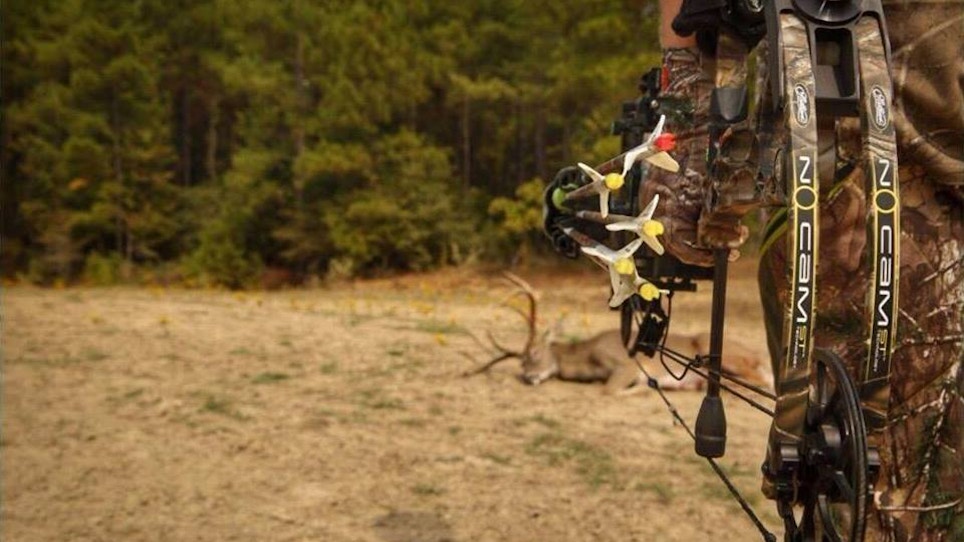It’s a relatively common scenario. You own a small property — say 80 acres — in a county where many good bucks are harvested. You see the occasional good buck during hunting season and you even get a photo or two on trail cameras. But so far, you’ve had little hunting success.
The property is just too small. To make it worse, the guys on one of the neighboring properties harvest any buck that moves. So big bucks just aren’t going to happen for you, because the guys next door shoot them when they’re yearlings.
Is there anything you can do to get and keep good bucks on your property?
Although it’s not an easy problem to solve, the answer is a loud “yes.” There are definitely ways to improve your chances at a good buck, even on a small property of 80 acres (or even smaller). At a Quality Deer Management Association (QDMA) convention, Dan Perez of Whitetail Properties once gave a great seminar on this topic. I was there and recorded his thoughts, while I've also thrown in some thoughts of my own.
Here are a few tips to consider.
Do the Habitat Work
First is the obvious — you need good habitat and good food. Creating a total of 10 to 20 acres of summer and winter food plots is essential. Some might be “hunting” plots, strategically placed on your property in areas that have the right wind and location to allow you to hunt them. Of course, you also need water, so if you have none, build one or two small ponds. It doesn’t take much.
Then you need some good habitat that provides cover and food as well. One simple way to provide cover is to plant warm-season native grasses that offer great cover for deer and other wildlife. You need to burn these sites every three years or so, but otherwise they need little maintenance. One advantage over other plantings is that warm-season grasses do well even in a drought year. You might want to do some selective tree cutting as well. Leave your good white oaks for mast, and create some cover and browse by cutting timber.
You also need some thick areas for bedding, probably 10 percent of your property, as close to the center of your property as you can get it. In recent years the term “sanctuary” has been used for such areas, and they are especially critical for small properties.
All of the aforementioned are things you’ve heard and read about for years. You might already be doing these things on your property. But there is one very essential element that often goes undone, and Perez centered on this element in his seminar.
The Key: Limit Intrusion
That key element is minimal intrusion. In other words, do not disturb the deer that come to your property. It sounds simple, but the devil is in the details.
If you have 2,000 acres and you play and recreate on 100 of those, no problem. On large properties, disturbed deer have plenty of other places to move and feel secure. Not so on small areas. If you disturb a buck on a small property, they leave and they might not be back for months, if ever.
If your hunting property is used by the family for summer picnics, swimming in the ponds, fishing in the summer, etc., then you are lowering your ability to hold big bucks. The idea is to create a property where the bigger bucks feel safe all year round. They then will come there in the hunting season from neighboring area properties, because it is on your land where they feel totally secure. That might not fit your family needs, but it’s a must if you want to hold big bucks.
For your best chance to hold bigger bucks on small properties, you cannot use your land for family recreation. No 3-D archery range. No mushroom hunting. No summer picnics. No biking or hiking. No cross-country skiing or snowmobiling. No ATV fun. No nothing except to create and plant your food plots and to hunt during the fall season.
When scouting, stay on the fringe of the property as much as possible. Erect some “observation stands” on the perimeter of your property and work from the perimeter in. Never drive any vehicles or ATVs on the property. You can do so on the perimeter, but never the interior (except for work on food plots, and even then, keep it reduced as much as possible). Do not place any tree stands within 100 yards of the sanctuaries you have created. Perez noted that “when you bump a buck on a small property, he is gone. Same for does.” So hunt the fringe, and only when you pin a big buck down should you move further onto the property.
Of course, the home range of deer in general, and bucks in particular, will exceed your 80 acres. Even so, with some thick-cover sanctuaries and good food, bucks might spend more than 50 percent of their time on your land. Remember, though, you must stay out of those sanctuaries! Bucks need to know they can come to your property, enter a sanctuary and be totally safe. No shed hunting, no entries at all except to retrieve a dead buck or follow a wounded one.
Put the right food on your land, create thick cover where deer can bed, and reduce your year-round presence to the fringe of the property as much as possible. Do those things and you have the makings of a great hunting location for years to come.
If you hunt a small property, have you found this to be true? Or do you use your property for recreation and still manage to hold big bucks?






